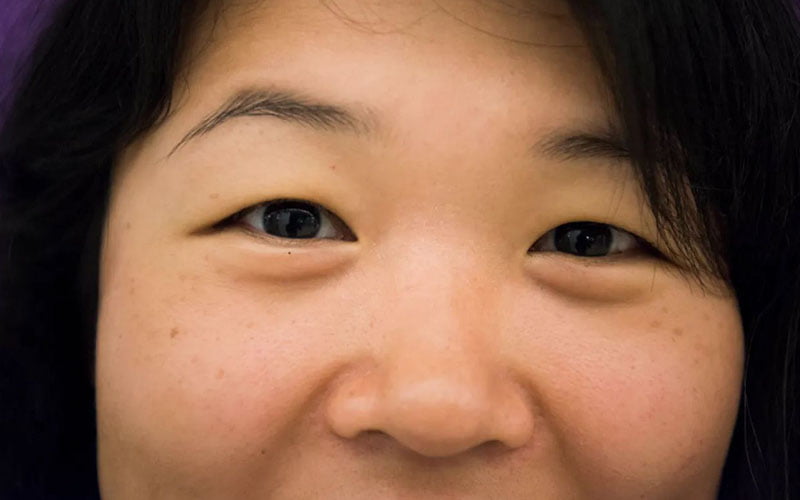
When it comes to physical features, the diversity among human populations is remarkable. Different ethnicity exhibit unique characteristics that make them distinct and fascinating. One such physical trait that has intrigued many is the size and shape of the eyes. In this article, we will explore the topic of “why do Asians have smaller eyes” and delve into the science, cultural perspectives, and misconceptions surrounding this phenomenon. Join us as we unravel the truth behind this intriguing question.
The size and shape of the eyes are predominantly influenced by genetics. Various genes play a role in determining these characteristics, and population studies have shown that Asians tend to exhibit certain genetic variations associated with smaller eye size. These genetic factors contribute to the unique facial features observed in Asian populations.
One prominent feature often associated with Asian eye appearance is the presence of epicanthic folds. These folds are skin creases that cover the inner corners of the eyes, giving the impression of a narrower opening. Epicanthic folds are not exclusive to Asians, as they can also be found in other populations around the world. However, they are more commonly observed in individuals of Asian descent, adding to the perception of smaller eyes.
Another explanation for the variation in eye size among different populations lies in adaptation to environmental conditions. It is believed that the smaller eye size in Asians may have evolved as an adaptation to protect the eyes from harsh weather conditions such as strong winds, cold temperatures, and dry climates. Smaller eyes with narrower openings may reduce the exposure of the eye surface, thus minimizing the risk of eye irritation and damage.
There is a common stereotype that associates eye size with intelligence, suggesting that individuals with smaller eyes are less intelligent. It is crucial to dispel this myth as it perpetuates harmful biases and reinforces negative stereotypes. Eye size has nocorrelation with intelligence or cognitive abilities. Intelligence is a complex trait influenced by various genetic, environmental, and social factors, unrelated to the size or shape of one’s eyes.
While it is true that some physical features may be more prevalent in certain ethnic groups, it is essential to recognize that there is great diversity within Asian populations. Asians come from diverse backgrounds, including East Asia, Southeast Asia, South Asia, and Central Asia, each with its own unique characteristics. It is inaccurate to generalize and assume that all Asians have the same eye size or shape.
Just as any other ethnic group, Asians exhibit a wide range of eye sizes and shapes. Even within a specific Asian population, there can be significant variations. These differences can be influenced by factors such as genetics, regional ancestry, and intermixing with other populations over time. It is crucial to appreciate and celebrate the diversity within Asian communities rather than relying on stereotypes or making broad generalizations.
Beauty standards vary across different cultures and societies, and they play a significant role in shaping perceptions of attractiveness. In some Asian cultures, a preference for certain eye shapes, such as the “double eyelid” or wider-eyed appearance, has been historically emphasized. These beauty ideals can influence individuals’ perceptions of their own eye appearance and may contribute to the popularity of cosmetic procedures like eyelid surgery.
Eyelid surgery, also known as blepharoplasty, is a cosmetic procedure that alters the appearance of the eyelids. It is one of the most common cosmetic surgeries performed in Asia and Asian communities worldwide. While some individuals opt for this procedure to conform to societal beauty standards, it is important to remember that personal choices regarding cosmetic procedures are deeply influenced by cultural, social, and individual factors. It is crucial to approach discussions about eyelid surgery with sensitivity and respect for individual choices.Embracing Cultural
Promoting inclusivity and body positivity involves recognizing and celebrating diverse beauty standards and challenging the notion of a single “ideal” appearance. It is crucial to create spaces where individuals from all backgrounds feel valued and represented. By embracing cultural diversity and fostering acceptance, we can create a more inclusive society that appreciates and celebrates the uniqueness of every individual.
To understand the significance of eye size, it is essential to have a basic understanding of vision and eye anatomy. The eyes are complex organs responsible for detecting light, converting it into electrical signals, and transmitting them to the brain for interpretation. The size and shape of the eyes primarily affect the field of view and the amount of light entering the eye.
It is important to debunk the misconception that individuals with smaller eyes inherently have poorer eyesight. Eye size alone is not a determining factor for visual acuity or the ability to see clearly. Vision quality is influenced by various factors, including the shape of the cornea, the health of the lens and retina, and overall eye health practices. It is essential for individuals of all ethnic backgrounds to prioritize regular eye exams and maintain good eye health habits.
Promoting eye health is crucial for individuals of all ethnicities, including Asians. Regular eye examinations, maintaining a balanced diet rich in eye-friendly nutrients, wearing protective eye wear when necessary, and practicing good eye hygiene are essential steps for maintaining optimal eye health. Additionally, raising awareness about the importance of early detection and treatment of common eye conditions, such as myopia and glaucoma, can significantly contribute to preserving vision in Asian communities and beyond.
A1: No, eye size varies among individuals of all ethnicities, including Asians. It is important to recognize that there is significant diversity within Asian populations, and eye size can differ based on genetics, regional ancestry, and other factors.
A2: Discussing eye size in a respectful and informed manner is not inherently offensive. However, it is crucial to approach such discussions with cultural sensitivity, avoiding stereotypes and generalizations. It is always best to engage in open dialogue and foster understanding rather than perpetuating harmful biases.
A3: Eye size alone does not directly impact vision quality. Vision is influenced by various factors, including the health of the cornea, lens, and retina. It is important to prioritize regular eye exams and maintain good eye health habits for optimal vision regardless of eye size.
A4: While there are no inherent advantages or disadvantages to having smaller eyes, some argue that smaller eye size may offer protection against environmental factors such as wind, cold, and dryness. However, it is important to note that these advantages are not exclusive to Asians and can be found in populations worldwide.
A5: Eye appearance is influenced by a combination of genetic factors, including eye shape, eyelid structure, and other facial features. Additionally, cultural beauty standards and individual preferences may play a role in shaping perceptions of eye appearance.
A6: Promoting inclusivity and dispelling stereotypes requires open-mindedness, education, and respectful dialogue. By celebrating and appreciating diversity, challenging biases, and fostering cultural understanding, we can create a more inclusive society that values the uniqueness of every individual.
The size and shape of the eyes among Asians and other ethnic groups are influenced by a combination of genetic, environmental, and cultural factors. While there may be certain trends and features more commonly observed in specific populations, it is essential to recognize the diversity within Asian communities and avoid generalizations or stereotypes. By embracing inclusivity, promoting cultural understanding, and prioritizing eye health, we can appreciate and celebrate the uniqueness of every individual, irrespective of their eye size or shape.
Recommended other topics: Catatonic Schizophrenia: Symptoms, Causes & Diagnosis










© InfoDoot. All Rights Reserved.